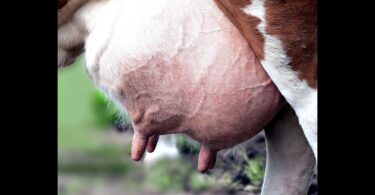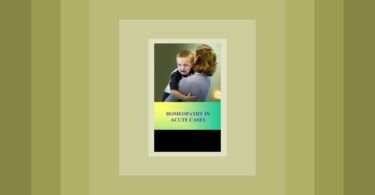Everyone welcomes monsoon with elation and warmth as it gives relief from the scorching heat. But along with joy, it leaves behind certain problems and maladies that need to be tackled. Water borne diseases like gastro, malaria, typhoid, leptospirosis, fungal infections, jaundice, viral infections etc. can mar the monsoon celebrations. Mosquitoes are on the rise in monsoon and bring with them a host of illnesses. Cases of malaria and dengue are on the upswing.
Diarrhoea is one of the most common conditions occurring during the monsoon season. Diarrhoea is defined as an increase in the frequency and fluidity of stools. It is a common but potentially serious illness in early childhood. Even a brief episode of diarrhoea leads to loss of 1-2% of body weight per day. There is excessive loss of water and electrolytes from the body during an episode of diarrhoea. Significant dehydration disturbs the balance of electrolytes and acid- base status of the body.
MODE OF TRANSMISSION
The most common mode of transmission of contagious ailments causing diarrhea (Homeopathy Treatment for Diarrhea) is the faeco-oral route from ingesting contaminated food or water. Person to person transmission may occur via contaminated hands, fomites or even aerosols (e. Rota Virus). Sexual transmission oro-genital, oral-anal can cause infectious diarrhoea.
CAUSES
There are several factors responsible for the onset of diarrhea. Some of them are as follows:
- Viruses.
- Bacteria.
- Parasites.
- Food poisoning.
- Dietary allergies.
- Carbohydrate intolerance.
- Decreased host immunity. (E.g. after attack of measles).
- Poor personal hygiene or food contamination.
- Inadequate treatment of acute diarrhoeas may lead to chronic diarrhoea.
- Deficiency of bile salts.
- Inflammatory bowel disease.
- Reactions to medication.
- Food addictives.
- Intolerance to food proteins such as cow’s milk or even soya milk.
- Idiopathic or functional diarrhoea.
FACTORS AFFECTING THE PREVALENCE OF INFECTIVE DIARRHOEA
- Poverty
- Inadequate access to clean drinking water.
- Inadequate sewage disposal
- Poor education
- Rapid Urbanisation
- Lack of access to primary health care.
- Food Consumption
- Uncooked, poorly refrigerated, inadequately heated prior to serving seafood especially raw shellfish.
- Picnics, banquets, fast food, restaurants.
- Oral sex, anal sex, withdrawal symptom of drug Abuse
- Institutions: Hospitals, Day Care centers for children, sanitorium, and mental institutions.
- Recent travels, especially from developed country to developing countries.
CLINICAL FEATURES
Nausea and vomiting (toxic liberation), abdominal pain and fever.
Stools may be watery (invasion with minimal inflammation).
Bloody Stool (invasion with severe inflammation).
Vomiting occurring after a few hours of taking foods and occurs in others who have eaten the same food – Food poisoning
lambilia: Diarrhoes with additional bloating and gurgling
ABDOMINAL EXAMINATION
There is only mild to moderate diffuse abdominal tenderness.
In Yersinia infection: Right upper quadrant tenderness.
LABORATORY DIAGNOSIS
- Routine Blood Counts
- Stool Examination
- For suspected Amoebic Infection: Giardia Antigen testing in the stool or duodenal aspirate / biopsy tissue.
- Bloody Diarrhoea more than one week – Sigmoidoscopy, Colonoscopy should be done.
APPROACH TO A CASE OF DIARRHOEA
- Prevent dehydration.
- Ensure that the patient is taking sufficient fluids.
- Avoid giving the child dairy products during an episode of diarrhea and for two weeks after it is resolved. This gives the intestines time to settle and heal.
- Avoid consuming heavy food, so that the stomach and intestines will have time to rest and heal.
- Eliminate foods that are difficult to digest.
- Fats should be eliminated from the diet.
- Proteins should be avoided for about forty-eight hours.
- Eliminate refined sugars, especially if the diarrhea is bacterial in origin. Bacteria thrive in the presence of sugar. Sugar also makes the body more acidic. An overly acidic internal environment slows healing.
- As the patient starts to feel better, offer a simple diet so that the digestive tract can easily absorb nutrients. Administer foods that are easily digested and absorbed.
HOMOEOPATHIC MANAGEMENT –
Homoeopathy is rapidly curative in diarrhoeas and gives splendid results. But, the remedy must be homœopathic. It must be a remedy not only of diarrhea, but it must fit the peculiarities of thiscase of diarrhœa for cure (Aphorism 147). One diarrhœa remedy will not cure another case of diarrhoea until and unless the remedy matches the peculiarities of that particular case. As these cases require urgent and immediate care, one needs the remedies at one’s finger-tips. A few remedies indicated for diarrhoea are discussed below.
- Merc Cor: Indicated for dysentery with scanty stools with blood and incessant straining, not relived by stool.
- Podophyllum: Commonest medicine for Diarrhoeas with profuse, watery, painless, offensive, gushing, which seems to drain the infant dry. Stools are larger than expected from food taken. The patient has great desire for water, none for food. There is marked gurgling in abdomen. Retching; vomits green froth or food. Diarrhoeas worse in the morning, teething baby. Prolapse of rectum with soft stool.
- China: Indicated for painless diarrhea of undigested food; copious & putrid stools.
- Merc Sol: Indicated for slimy, even bloody diarrhoea, with straining followed by chilliness. There is profuse perspiration which does not relieve. Mouth is offensive. Salivation with intense thirst. Tongue is large, flabby, with imprint of teeth. Aggravation at night, from warmth of bed. Thighs and legs are cold and clammy especially at night.
- Veratrum: Useful for Diarrhoea with vomiting in which vomit, stools and sweat are very profuse. Thirst for much cold water, acid drinks. Patient feels exhausted after each spell. Cold sweat on forehead from least movements.
- Dulcamara:Diarrhoeas from every change of weather from warm to cool. Ailments from exposure to cold, or damp. Changeability of stools. Nausea with desire for stool. Colic before and during stool. Prostration. Weakness from Stools.
- Croton Tig:Useful for Diarrhoeas with yellow, watery stool that comes out like a shot. Often occurs while nursing or immediately after nursing babies. Any food or drink triggers this sudden stool. A hand pressing on umbilicus produces protrusion of rectum.
- Aloes: Diarrhoes in which there is rush to stool after eating or drinking. Inability to retain or to evacuate stool.
- Kreosote:Useful for Cholera infantum in teething infants with very painful dentition, gums painful, spongy. Severe cases with incessant vomiting and stools with cadaveric odor. Patient is intensely irritable.
- Chamomilla:Indicated for Diarrhoeas with watery, greenish stools, excoriating, smelling like rotten eggs. Baby is very cross, must be carried. Useful for Diarrhoea in teething babies.
- Arsenicum:Diarrhoea worse at night from 1 to 3 am. There is rapid emaciation with exhaustion and collapse. Intense restlessness. Painless, watery, offensive stools. There may be simultaneous vomiting and diarrhoea. Diarrhoea worse after cold drinks when heated, in older persons after ices. Thirst for cold water, but it is immediately vomited. Face looks pale, cadaverous. Skin is dry, wrinkled, toneless.
- Gelsemium:A useful medicine for epidemic dysentery of malarial or catarrhal type. Indicated for acute catarrhal enteritis, mucous diarrhoea. Discharges are almost involuntary, intense spasmodic colic and tenesmus. Fright, emotion and anticipation will produce diarrhoea. Gelsemium has chills up and down back with trembling, heaviness of limbs and eyelids.
Miasmatic Presentation of Diarrhoea–
| Psoric Diarrhoea | Sycotic Diarrhoea | Syphilitic Diarrhoea | Tubercular Diarrhoea | |
| Ailments From | Over-eating, fright, bad news, or any ordeal, when preparing for any unusual event, taking cold or from slightest exposure. | Getting wet. | Dentition | Least exposure to cold, at the beginning of the eruption of first tooth. |
| Nature of stool | Usually watery, consisting of imperfectly digested food. | Slimy, watery, mucous stools. Seldom bloody.Stools are forcibly ejected from the rectum with cramping pain in lower abdomen. | Profuse, watery, exhausting & debilitating. | Slimy mucus or bloody. Exhaustive stools. |
| Odour | Usually offensive | Sour-smelling | ||
| Colour | Of any colour | Changeable usually greenish yellow. | Stools are ashy or grey in colour | |
| Pain | Not very painful. Spasmodic | Most painful. Spasmodic and | ||
| Complaints Before/ During and after stools | After stool – great weakness felt only in the region of the abdomen. | Before stool -there is often vomiting and retching.After stools – Intense prostration & passage of blood. | ||
| Aggravation | Morning, cold, motion, eating and drinking cold things. | Night, seaside, extremes of temperature, summer, warmth | Morning, milk, potatoes, meat, motion. | |
| Ameoliration | Warm drinks. | |||
| Drugs | Podophyllum, Sulphur, Aloes Gels, Opium, Aconite. | Rheum., Chamomilla, Mag. Carb., Croton-tig., Laurocerasus, Colocynthis, Dulc, Ipecac., Gratiola., Arg-Nit., etc., | Sanguinaria. Phosphorous, Kali-carb., Tuberculinum, Stannum, Verbascum Alb., Arsen., Camphor, Cuprum Met. |
Prevention:
- Uncontaminated drinking water and proper sewage disposal by Public Health Authority.
- Strict Personal Hygiene when handling foods.
- Infections in infants can be prevented by Breast feeding.
- Educate people about personal and food hygiene. Use clean containers.
- Water used for drinking and preparing feeds should be clean, potable, preferably boiled. Avoid exposure of food to dust, flies or cockroaches.
- Improving environmental sanitation, maintaining good water supply, having an adequate sewage disposal system and protecting food from exposure to bacterial contamination are effective long-term strategies for control of all infectious illnesses including diarrhoea.
Homoeopathy, being a holistic medicine, it acts even as a preventive for rain-borne aliments. But here too it is necessary to individualize each case to determine the remedy. A constitutional prescription considering the whole person, helps prevent any kind of disease, provided you follow the other preventive measures.
REFERENCES:
- API Practice of Medicine
- Pointers to the Common Remedies by Dr. M.L. Tyler.
- Materia Medica by Boericke
For more about diarrhea visit:







Very nice presentation.Detail symptoms given,useful for all practitioners
It gives lot of information. Thanks for this effort.
Perspective article!
Miasm explained excellently.